Hey Tom,
Interesting article. I like using background music in specific places, like on intro and conclusion slides, on a “how to take the quiz” slide, or like you described for a scenario. Also, I try to make sure you can really hear the narrator, that the music is very low in volume. It’s also good for when you have an instructional video where someone is doing a task and the narrator is only coming in for bits here and there. Dan
When to Use Background Audio in E-Learning
December 1st, 2020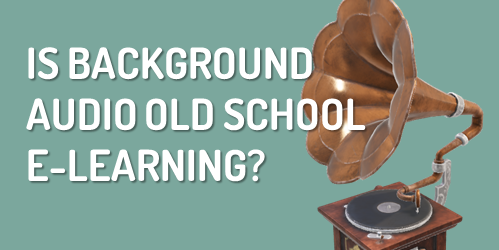
Background audio is not as common as it once was in e-learning. It is a little old school. And often it is distracting. Also, with mobile technology (and some limitations playing multiple audio tracks) it may create some problems playing the way you intend it.
However, there are times where background audio makes sense.
For instance, I like to use background audio to establish some context. It makes sense to have some ambient audio in decision-making scenarios, for example. You can set a tone or create a more immersive experience for the learner.
In those cases, I like audio like the hustle and bustle of office workers and machines, or a busy street with traffic, or a coffee shop with lots of human activity. I prefer that over music tracks because it feels like you’re there.
I do like to use music tracks. One place where they work well is when I am doing quick screencast tutorials. Sometimes the audio was recorded in a less than ideal room with a little bit of ambient noise like my air conditioner. Adding a subtle background track covers the noise. And the right track with a good beat can set a tone and help move the tutorial along.
There are a lot of studies that also show that some types of music can influence how the brain processes information. Perhaps, a background audio track works for your course to help learners retain content. Not sure, but something to explore.
I will add that an audio track won’t make your boring course less boring. It’ll still be boring, but at least they can listen to something entertaining until they’re done.
Next time you’re meeting with learners as part of your analysis, listen to what their world sounds like. Is it possible to add that to your courses?
I know that there are many of you who will trot out the cognitive load arguments. That’s all good. However, I’d say there are thousands of other examples outside of e-learning, where multimedia effectively integrates audio into the experience. Look at advertising, gaming, and other entertainment industries for ideas.
I’d love to hear how you’re using audio in your courses. Got any tips and tricks? Feel free to share them by clicking on the comments link.
Events
- Everyday. Check out the weekly training webinars to learn more about Rise, Storyline, and instructional design.
Free E-Learning Resources
 |
 |
 |
|
Want to learn more? Check out these articles and free resources in the community. |
Here’s a great job board for e-learning, instructional design, and training jobs |
Participate in the weekly e-learning challenges to sharpen your skills |
 |
 |
 |
|
Get your free PowerPoint templates and free graphics & stock images. |
Lots of cool e-learning examples to check out and find inspiration. |
Getting Started? This e-learning 101 series and the free e-books will help. |
5 responses to “When to Use Background Audio in E-Learning”
Love this topic. I’ve heard very smart people on both sides of this argument. What I’ve noticed is a lot of the best and most successful Youtube content creators use upbeat music in the background. I think volume and mood matching are considerations too.
I have added light music in the background when the speaker has a lot of distracting habits, like saying ummmm, ahhhh, sooooo, etc. Those are very difficult to edit and keep a video from looking choppy. Adding light music makes those habits less noticeable.
Could you please let me know which available sites or apps that are available in order to add free music tracks to screencasting projects? Thank you.
One way I love to use music within ELearning is as part of the introduction. Fast paced exciting music can get people engaged & enthusiastic even before they get into that first interaction.
I am wary of cognitive load issues with using too much music, and try not to use it in situations where it can be distracting. That said television, movie, and game users are used to a soundtrack, and if timed right it can be used to enhance learning moments rather than distract from them.
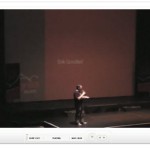
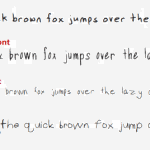
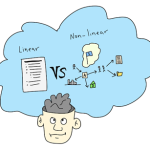

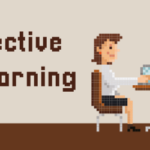
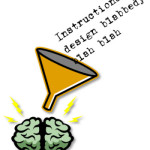



0
comments